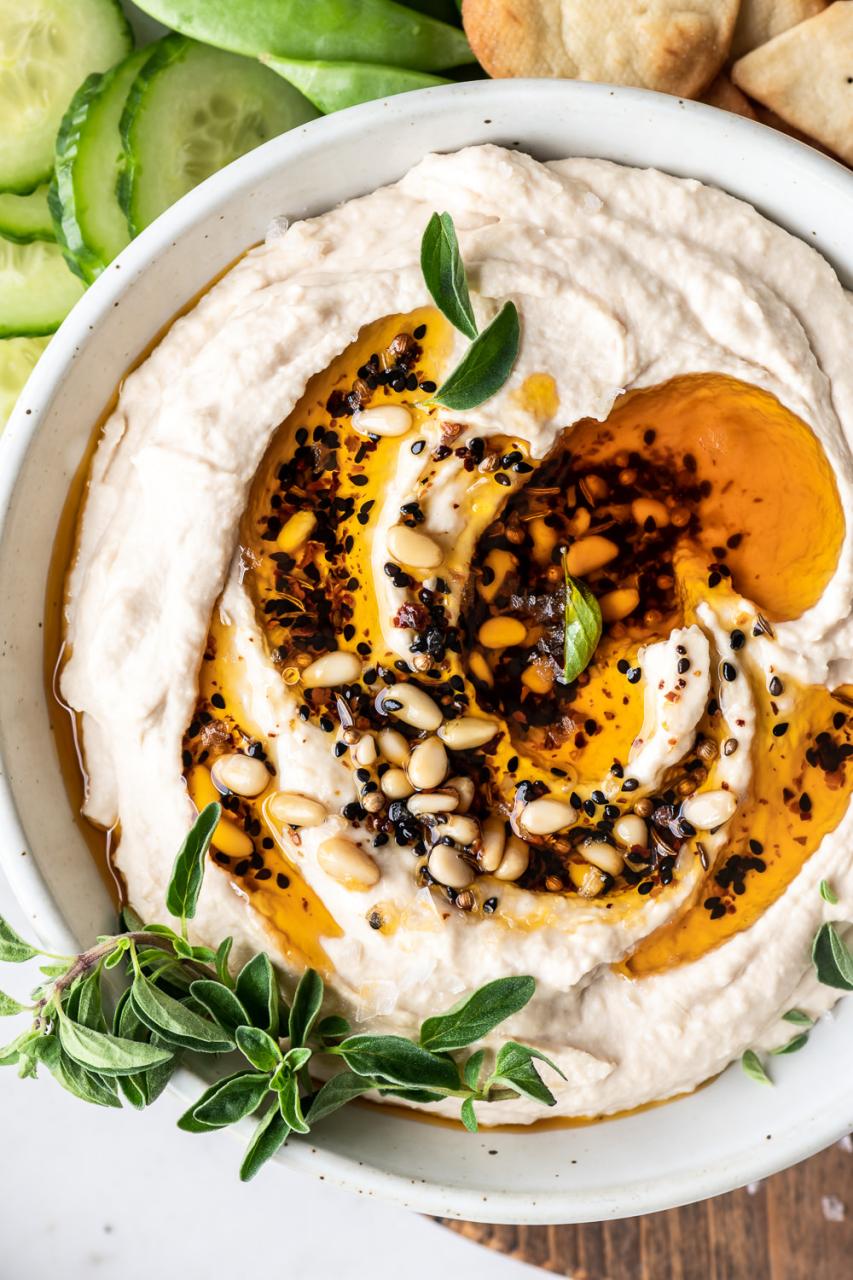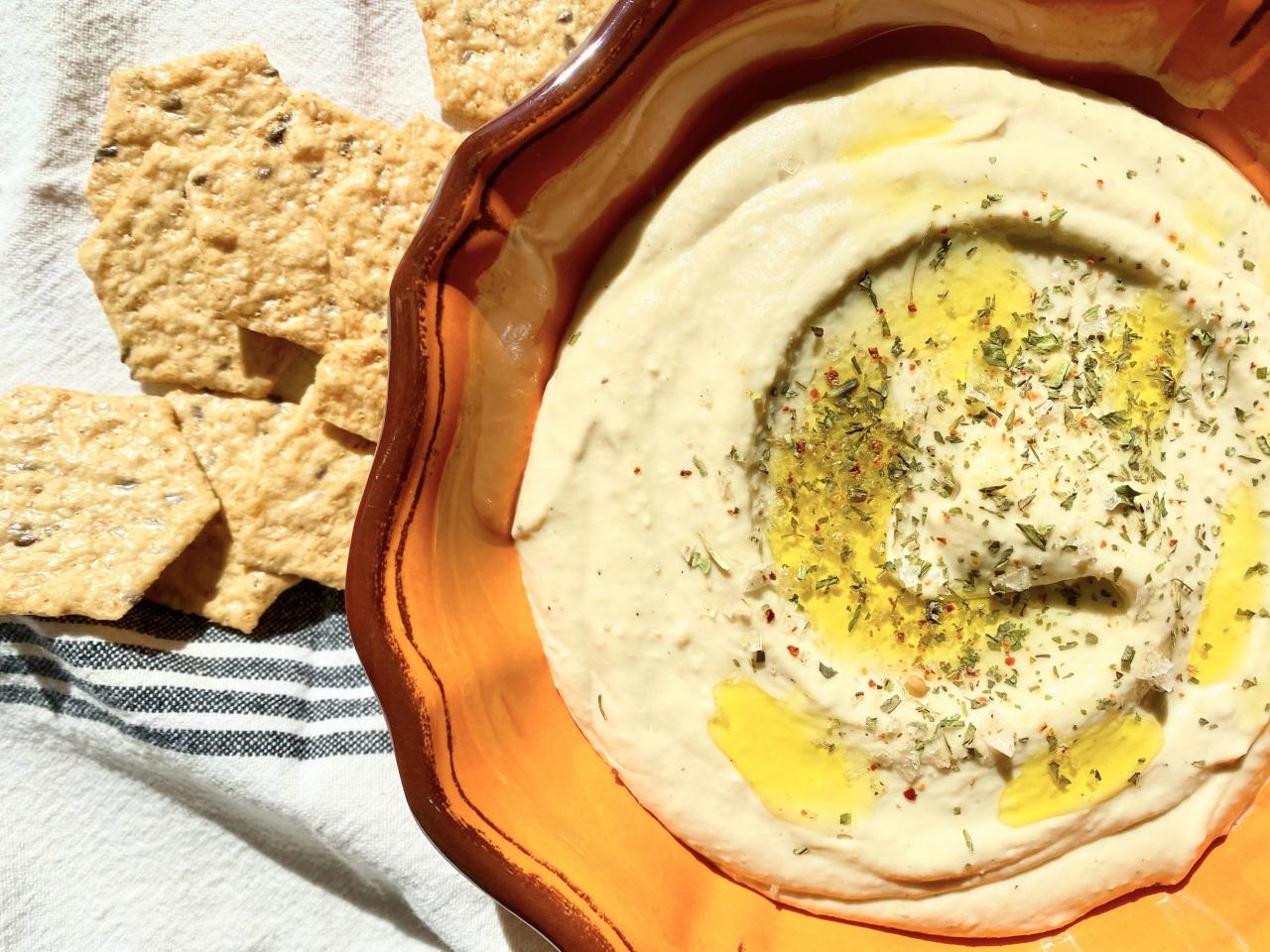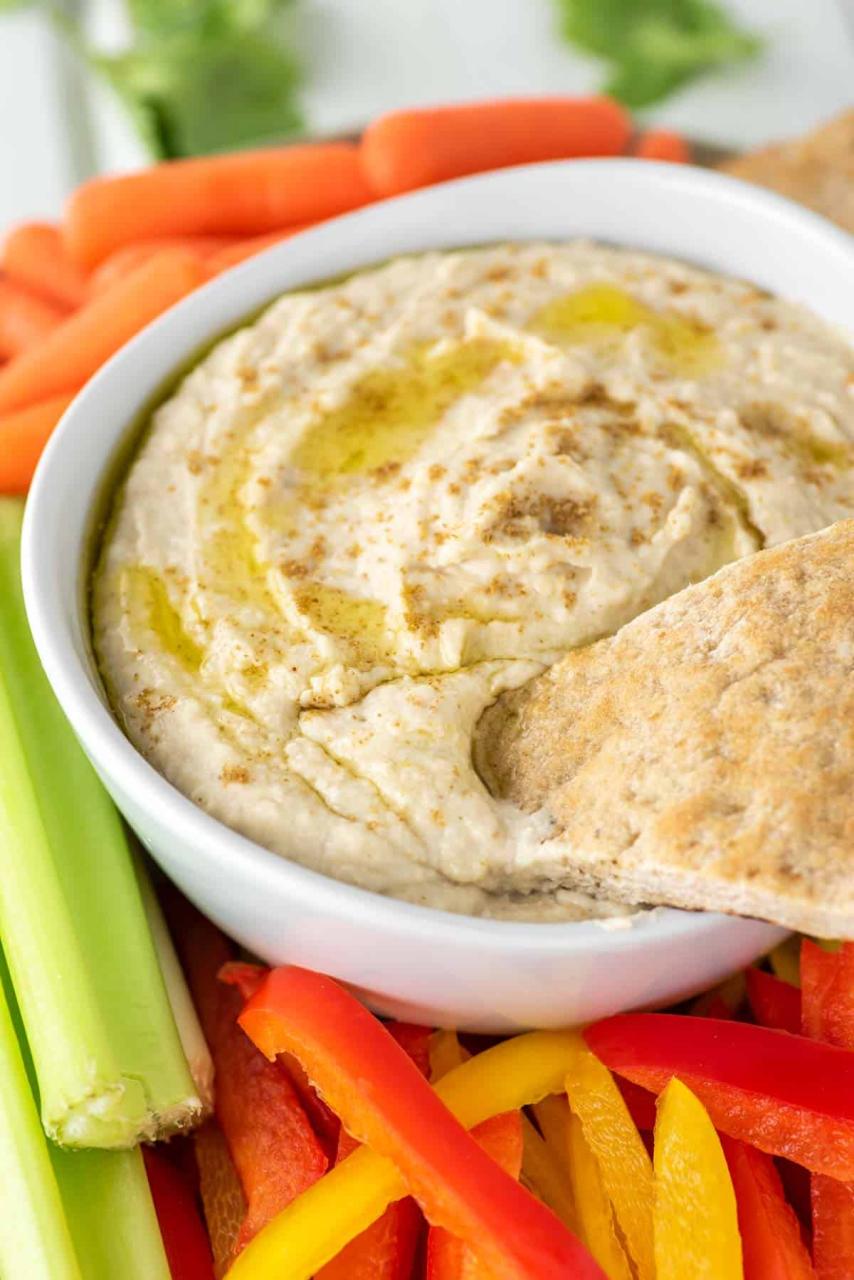In the heart of a bustling kitchen, amidst the clinking of cutlery and the warm embrace of shared laughter, there lies the potential for a culinary creation that is both unassuming and extraordinary. White Bean Hummus is such a dish—a smooth, creamy spread that offers a twist on the traditional chickpea-based classic. It’s a recipe that speaks to the soul’s desire for both comfort and discovery, blending the familiar with the novel.
The choice to craft White Bean Hummus comes from a yearning to explore the versatility of legumes, to celebrate their understated elegance, and to offer a tribute to the humble white bean’s buttery texture. This hummus is more than a dip; it’s a bridge between cultures, a fusion of Middle Eastern flavors with the hearty substance of Western fare.
There’s a certain joy in watching the transformation of simple ingredients—cannellini beans, tahini, lemon juice, and garlic—into a harmonious blend that is as nutritious as it is delicious. Whether it’s for a quiet evening at home or as the centerpiece of a lively gathering, White Bean Hummus is a testament to the beauty of simplicity and the endless possibilities that arise when we dare to reimagine the classics. Join me as we delve into this recipe, a celebration of flavor and texture that promises to become a cherished addition to your culinary repertoire.
White Bean Hummus Recipe

White Bean Hummus is a creamy, versatile spread that offers a delightful alternative to traditional chickpea hummus. It’s made from cannellini beans or other white beans, which provide a smooth texture and a slightly nutty flavor. The beans are blended with tahini, lemon juice, garlic, and olive oil, creating a rich and satisfying taste experience.
This dish is celebrated for its health benefits, as it’s high in protein and fiber while also providing healthy fats and essential nutrients. White Bean Hummus can be enjoyed in a variety of ways: as a dip for vegetables and crackers, spread on sandwiches or wraps, or even as a base for other recipes.
The simplicity of the ingredients allows for customization, inviting the addition of herbs, spices, or other flavorings to suit personal preferences. It’s a perfect option for those seeking a nutritious snack or a flavorful addition to meals.

Ingredients
Equipment
Method
- In a food processor, combine the beans, garlic, tahini, lemon zest and juice, salt, pepper and pulse to combine.
- With the motor running, stream in the olive oil, scraping down the sides a couple of times. Add in water 1T at a time to desired consistency.
- Add in chili flakes, if using, along with the dried or fresh, chopped herbs to the hummus, pulse a few times until combined. Taste and adjust to your taste for additional herbs, salt and pepper; and, if you’d like, thin it out with a few tablespoons of water or more lemon juice.
- Sprinkle additional herbs and chili flakes on top for garnish.
Video
Cooking Tips

Creating White Bean Hummus is a delightful culinary endeavor that brings both comfort and creativity to the kitchen. I find joy in the simplicity of blending the white beans to a creamy perfection, their mild flavor providing a perfect backdrop for the zesty lemon and aromatic garlic. It’s essential to add the olive oil gradually, watching as it emulsifies and enriches the hummus with a silky texture. A personal touch I adore is adding a pinch of cumin or smoked paprika, which whispers hints of warmth and depth to the palate. This hummus is more than a dish; it’s a canvas for expression, inviting each cook to imprint their own flavor preferences and create a spread that’s uniquely theirs.

